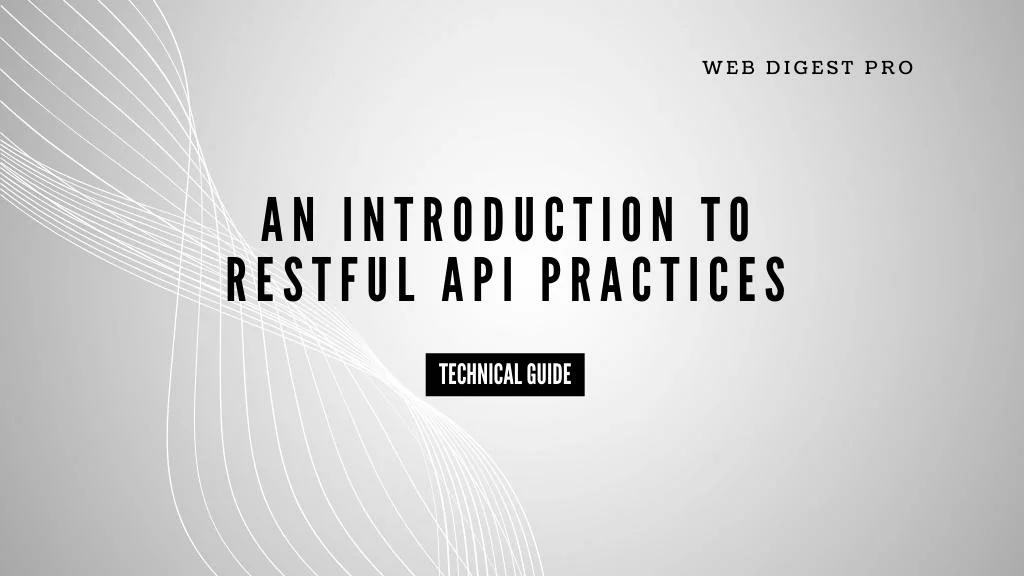This article explores the fundamental principles of REST API design, highlights best practices, and identifies common pitfalls to avoid. By following these guidelines, you can create a well-structured API that is easy to maintain, extend, and use.
1. Understanding REST API Design Principles
REST (Representational State Transfer) is an architectural style that leverages HTTP protocols to create scalable web services. RESTful APIs are designed to be stateless, which means each request from a client to the server must contain all the necessary information to understand and process the request. The API must also adhere to a consistent structure, making it predictable and easy to use.
Key REST Principles:
- Statelessness: Each request from the client to the server must include all the information needed to understand and process the request.
- Uniform Interface: The API should have a consistent structure, making it predictable and easy to use.
- Resource-Based: Everything in the API is treated as a resource, identified by URLs, and manipulated using HTTP methods.
- Client-Server Architecture: The client and server operate independently, communicating over a standard protocol (typically HTTP).
2. Resource Naming Conventions
One of the most critical aspects of REST API design is the way resources (entities like users, orders, or products) are named and represented in URLs. Proper resource naming ensures clarity and consistency.
Best Practices:
- Use Nouns, Not Verbs: URLs should represent resources, not actions. For example, use
/usersrather than/getUsers. - Use Plural Nouns: Keep resource names plural to indicate a collection of resources, e.g.,
/ordersinstead of/order. - Hierarchical Structure: Use a clear hierarchy to represent relationships between resources, such as
/users/{userId}/orders/{orderId}. - Avoid Using File Extensions: Stick to clean URLs without file extensions like
.jsonor.xml. The content type can be specified in the headers.
Example:
- Good:
GET /api/users/123/orders - Bad:
GET /api/getUserOrders
3. HTTP Methods and Status Codes
RESTful APIs rely heavily on HTTP methods to perform operations on resources. Understanding and correctly implementing these methods is vital for creating an intuitive API.
HTTP Methods:
- GET: Retrieve data from the server. Should not alter the state of the resource.
- POST: Create a new resource or submit data to the server.
- PUT: Update an existing resource or create one if it doesn’t exist.
- PATCH: Apply partial updates to a resource.
- DELETE: Remove a resource from the server.
HTTP Status Codes:
- 200 OK: The request was successful.
- 201 Created: A resource was successfully created.
- 204 No Content: The request was successful, but there’s no content to return.
- 400 Bad Request: The request was malformed or invalid.
- 401 Unauthorized: Authentication is required or has failed.
- 403 Forbidden: The client is authenticated but does not have permission.
- 404 Not Found: The requested resource could not be found.
- 500 Internal Server Error: A generic error occurred on the server.
Example:
- Good: Returning
201 Createdwhen a new resource is successfully created with a POST request. - Bad: Using
200 OKfor all responses, regardless of the actual outcome.
4. Versioning Strategies
APIs evolve over time, and maintaining backward compatibility while introducing new features or changes is essential. Versioning helps manage this process effectively.
Versioning Techniques:
- URI Versioning: The version number is included in the URL, such as
/api/v1/users. - Query Parameters: The version is specified as a query parameter, e.g.,
/api/users?version=1. - Custom Headers: The version is included in custom HTTP headers, e.g.,
Accept: application/vnd.myapi.v1+json. - Media Type Versioning: The version is embedded in the media type, such as
application/vnd.myapi.v1+json.
Best Practice: Use URI versioning for its simplicity and clarity. It allows easy tracking and understanding of the API version being used.
Example:
- Good:
GET /api/v1/products - Bad: Overwriting existing endpoints without versioning, leading to potential breaking changes.
5. Designing Consistent and Predictable Endpoints
Consistency in API design significantly improves usability and reduces the learning curve for developers consuming your API. Predictable patterns help users anticipate how to interact with new endpoints.
Best Practices:
- Consistent URL Structure: Maintain uniformity in URL structures across different resources.
- Use Standard HTTP Methods: Stick to conventional HTTP methods for operations to avoid confusion.
- Error Handling: Provide consistent error responses with meaningful messages and standard error codes.
- Documentation: Keep your API well-documented, ensuring it’s easy for developers to understand and use.
Example:
- Good:
GET /api/v1/users/{userId}/ordersfor retrieving orders for a specific user. - Bad:
GET /api/v1/getUserOrders/{userId}breaks consistency by embedding the action in the URL.
6. Common Pitfalls to Avoid
Even with a well-planned design, certain pitfalls can undermine the effectiveness of your REST API.
Pitfalls:
- Overcomplicating URLs: Avoid creating overly complex or deeply nested URLs. Simplicity aids usability.
- Ignoring Caching: Not implementing caching mechanisms can lead to poor performance. Use caching headers like
ETagandCache-Control. - Lack of Pagination: When dealing with large datasets, not implementing pagination can lead to performance bottlenecks.
- Poor Error Handling: Generic error messages or inconsistent error structures can confuse users. Always return clear, actionable error responses.
Example:
- Good: Implementing pagination with
GET /api/v1/products?page=1&limit=20. - Bad: Returning the entire dataset in a single request without pagination.
Overview
Designing a RESTful API that is scalable, maintainable, and easy to use requires careful consideration of best practices and a keen awareness of common pitfalls. By adhering to standardized resource naming conventions, using appropriate HTTP methods and status codes, implementing versioning strategies, and ensuring consistent endpoint design, you can create a robust API that developers will find intuitive and reliable. Avoid common pitfalls by keeping your design simple, implementing caching, and providing meaningful error responses. With these principles in mind, your REST API will be well-positioned to support current and future needs.
Links
Written by Dimitrios S. Sfyris, founder and developer of AspectSoft, a software company specializing in innovative solutions. Follow me on LinkedIn for more insightful articles and updates on cutting-edge technologies.
Subscribe to our newsletter!














+ There are no comments
Add yours